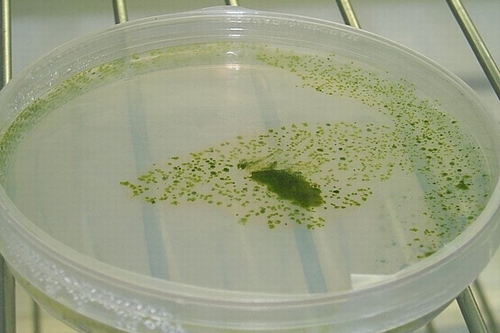December 3, 2013
Japanese Researchers Succeed in Doubling Quantity of Hydrogen Produced by Blue-Green Algae
Keywords: Environmental Technology Renewable Energy University / Research institute
 イメージ画像: Photo by Dave Thomas. Some Rights Reserved.
イメージ画像: Photo by Dave Thomas. Some Rights Reserved.
A research group at RIKEN, a Japanese comprehensive research organization for basic and applied science, announced on September 11, 2013, that using genetically modified blue-green algae, they succeeded in increasing hydrogen production by blue-green algae, microorganisms that have a photosynthesis function, to more than twice that of ordinary production.
Hydrogen is a promising next-generation clean energy to replace fossil fuels because it doesn't emit carbon dioxide when burning. The existing ordinary method of producing hydrogen is a steam-reforming method, a method to produce hydrogen by inducing a reaction between steam and natural gas or coal. However, the method will lead to resource exhaustion and entails other environmental concerns; thus, there is demand for a new method to produce hydrogen using natural energy such as solar light.
From the results of their recent study, the research group found that a protein substance called SigE, an RNA polymerase-sigma factor which functions to control the balance between carbon and energy in blue-green algae, may affect the hydrogen production process. They produced blue-green algae which increase the amount of intracellular SigE protein using genetic modification techniques, and then observed the hydrogen production process. The result showed that the research group succeeded in increasing hydrogen production to more than twice the normal amount.
In addition, they also found that the increase of SigE protein causes various changes in cells such as altered photosynthesis activity and an increase by about 1.6 times in cell diameter. They think these findings will help develop a feasible hydrogen production system using blue-green algae.
Related
"JFS Newsletter"
Related
"Popular Articles"
- New Nano-Bubble Technology May Help Dissolve Sludge and Improve Water Quality
- Japanese Firm Begins Development of Tidal Power Generation System
- Small Hydropower Generation System Developed for Use in Seawater, Weight Cut by Half
- Constructed Wetland Facility Established by Japanese University Purifies Livestock Farming Drainage
- Toyota CRDL Succeeds in World's First Artificial Photosynthesis Using only Water and CO2


